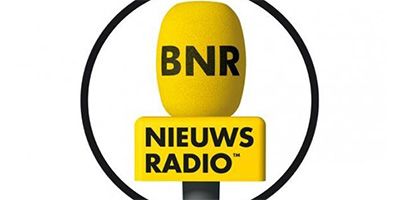
Pupil dilation, heartbeat, lean-forward, and skin conductance. What can biometrics reveal in neuromarketing research?
Neuromarketing research focusses on the purely automatic response of a consumer. In other words: Measuring brain activity.
Techniques like EEG and fMRI discover the emotional inside using brain waves and the activation of specific brain regions. Often combined with Eye Tracking, neuromarketing research uncovers how the customer reacts to an advertisement, website or store.
Following the neuro trend, so-called biometrics are also becoming increasingly popular. Biometrics register the biological reactions of the body. Just like brain activity, the participant cannot control these reactions. This is potentially interesting for marketers, because these metrics are considerably less expensive and easier to measure than neuromarketing research methods.
The key question is: What can biometrics tell us about the emotions and motivations of a consumer? How valid are these metrics? And for what type of research questions are they appropriate?
In this blog, we’ll discuss four types of biometrics:
1- Pupil dilation
2- Heartbeat
3- Lean-forward
4- Skin conductance
1. Pupil dilation in neuromarketing research
In marketing research, pupil dilation has been measured since the the 70s. It is the true grandfather of all neuromarketing techniques.
Human pupils dilate when the individual is thinking about something thoroughly (System 2 thinking), is feeling intense emotions, is aroused or is interested. Even though this information is interesting to marketing, pupil dilation on itself is not enough. What can be inferred of the dilated pupil exactly? One can only guess.
A second disadvantage of pupil dilation is the large extent to which pupil dilation can change based on the brightness of the viewing object. A darker image or scene can count on a more dilated pupil, which is why pupil dilation isn’t a usable metric for advertisements, website or shops with a variable amount of color and light.
Therefore, pupil dilation is never used in isolation. It’s supplementary to more clarifying research methods like brain activity or emotion recognition. Today’s improved Eye Trackers still register pupil dilation as a part of the Eye Tracking procedure.
2. Heartbeat in neuromarketing research
Heartbeat not only varies when an individual engages in physical effort, it also reflects specific parts of the customer experience. Within heartbeat, there are two interesting metrics: Time between heartbeats (interbeat interval or IBI) and the variability in heartbeats (heartbeat variability or HRV).
IBI. When an individual give something their attention, the time between heartbeats decreases. The heart slows down when highly focused (Lacey, 1967; Lang, 1994). It appears that advertisements that do not induce heightened attention (increased IBI) with the first 5 seconds are more likely to fail. Early decrease of the heartbeat is a necessary – yet not sufficient – condition for an effective advertising campaign (Bellman et al., 2017).
HRV. It seems contra-intuitive, but a strongly varying heartbeat is a positive element. It’s a sign of good health and a stronger capability to face stress. From a marketing perspective, increased HRV indicates higher arousal. However, it cannot pinpoint an emotion. Strong happiness, anger, and sadness will cause the same arousal response. Therefore, it is an interesting extra metric for brain research to indicate the intensity of the measured emotion from the brain.
3. Lean-forward in neuromarketing research
Eye-tracking instruments now provide an interesting extra metric: They register the distance between a person to the screen. Using this, it can assess when someone leans forward.
What does that say?
Even though this metric has not been given the time of day (yet), there seems to be a connection between lean-forward and interest. In our own research, we’ve seen that a correlation between lean-forward approach behavior in the brain (measured by frontal asymmetry). However, people also lean-forward when processing difficult information, reading small texts or reading at all. Because of its broad interpretation possibilities, lean-forward is not suited as a metric in isolation, but it can be used as an add-on for EEG data.
Because lean-forward comes for free when using any type of high-quality Eye Tracker, it is often included in the analysis of neuromarketing research.
4. Skin conductance (Galvanic Skin Response, GSR) in neuromarketing response.
Skin conductance is the same as pupil dilation and HRV: it is a measure of physical arousal. Of these three, skin conductance is the most reliable measurement of emotional intensity, as it is least scourged by external factors.
To measure skin conductance, the GSR system is used. This system consists of two electrodes that are placed on the participant’s fingers and a small device on the wrist. When someone experiences arousal, the sweat glands on the fingers excrete a miniscule amount of perspiration, increasing the skin conductance of the hand.
It hereby provides an insight of emotional intensity during advertisement and usability research. GSR is less fit for in-store retail research, as the more intense movements of the participants during this type of research cause an increase in skin conductance as well.
Skin conductance is rarely used as stand-alone, more often as an extra on brain activity or emotion recognition. The brain or the face show the type of emotion the participant is experiencing, skin conductance tells us how intense this emotion is.


 EN
EN  NL
NL 




